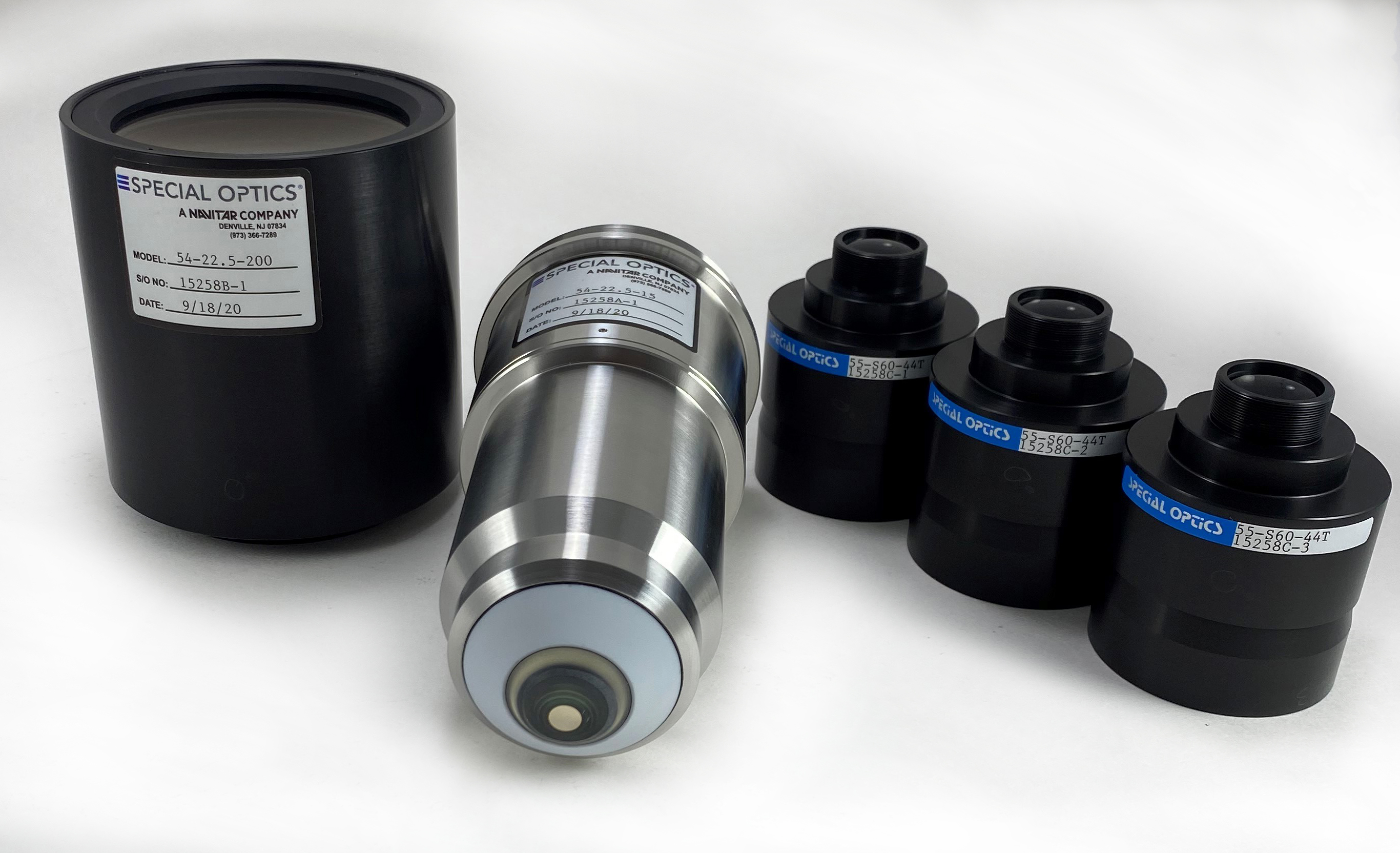New custom microscopy and integrated lens-camera solutions from Navitar expected to add $9.5 million in annual sales to the Navitar family of companies.
March 2, 2021 – Rochester, New York – Next generation DNA sequencers, live cell imaging systems, advanced semiconductor inspection and microfluidic systems are just a few of the applications driving new business at Navitar, headquartered in Rochester, NY, with a Special Optics division in Denville, NJ and Pixelink camera operations in Ottawa, Canada. The company won several new orders in microscopy and life science applications during the COVID-19 lockdowns which are expected to add more than $9.5 million to the firm’s annual revenue.
According to Navitar CEO Jeremy Goldstein, “Life Science instrument manufacturers and Semiconductor equipment makers are looking for ways to improve their products and beat their competition with cutting edge technology. Researchers often run into limitations with commercial off-the-shelf microscopy components. At Navitar, we are happy to provide the right microscopy components and integrated lens-camera solutions needed to push the art of microscopy.”
Navitar recently worked with a medical instrument manufacturer to help improve imaging performance of their time-lapse live cell imaging system - specifically to improve the image acquisition, assessment, and selection process. The customer integrated a custom imaging solution which included a high NA microscope objective, tube lens, illuminator, and camera assembly.

|
Figure 1. Custom microscope objective, scan lens and tube lenses designed by Special Optics, A Navitar Company |
A manufacturer of advanced inspection equipment for Semiconductor manufacturing chose Navitar’s Special Optics division to design an imaging optics solution with superior resolution to capture images and immediately spot defects in real-time on the manufacturing floor. This proprietary optical design led to a two-fold increase in resolution and allows the manufacturer to isolate defects and catch flaws in the x-ray imaging process of integrated circuits, which are difficult to inspect and characterize.
Strong engineering partnerships with DNA Sequencing manufacturers has led to new development work for Navitar to produce the imaging system modules and custom laser optics to enable the development of next generation sequencers. “Navitar is designing and manufacturing wide field of view microscope objectives, tube lenses, cameras, and integrated lens-camera sub-systems that are precisely aligned to achieve maximum imaging performance for the new genetic testing and sequencing instruments. Enabling new levels of performance and lowering of the overall cost of genomic applications is a win for everyone,” comments Mr. Goldstein.
A highly respected research lab chose Navitar’s Special Optics division to collaborate and develop a custom objective, scan lens, and tube lens (see Figure 1) to help further their capabilities of deploying Multiphoton microscopy (MPM) techniques for research. “A unique collection of optics tailored to move beyond barriers and limitations of off-the-shelf microscope components makes collecting meaningful data easier,” said the photonics firm.
A medical instrument manufacturer, developing a point-of-care imaging blood analyzer has chosen Navitar’s Pixelink Camera Model PL-D7912CU for their instrument. According to Navitar, “This customer said that the ease of integration with Pixelink’s Software Development Kit (SDK), the ongoing Pixelink technical support during the product development cycle, and technical modifications to accommodate the high resolution and high-speed data collection required for successful deployment was the reason they chose Pixelink for this project.”
A research institute with an eye on commercializing proprietary technology has chosen a Navitar Zoom SWIR lens to image live animal tumors. By injecting a fluorescent dye that emits a signal in longer wavelengths, researchers can capture images several millimeters deeper in the body of the animal. “Sensitive imaging optics in the 1000nm-1500nm range collect this light and image successfully for later or in-situ analysis,” a spokesman for Navitar said.
Navitar teamed up with a Biotech company looking to develop a high-throughput microfluidic platform for drug discovery. With Navitar’s Super Wide Angle 4K Imaging Objective and tube lenses, paired with a Pixelink PL-D7620 high quantum efficiency Sony IMX183 based 20MP color camera, the customer achieved a wider field of view to capture more PicoWells and enabled increased throughput.
“Navitar provides the tools needed to push the art of microscopy,” said Navitar CEO Jeremy Goldstein. “Our customers often have the microscopy specialists and world-class teams to advance science. They just need the optimal microscopy components.” Goldstein further adds, “When approached by a customer, we discuss their needs as well as our services. We offer a quick feasibility study of the product development project, provide a quick cost estimate, complete a preliminary design and deliver diffraction limited optical solutions faster than any other company. We quickly ramp up production volumes and ensure consistency from unit-to-unit for the lifetime of our customers’ production.”
